Best
Beginner Euphonium
-
Overall: 9/10
-
Best Feature: Lighter weight model
-
TedScore™: 9/10
Best
Intermediate Euphonium
-
Overall: 8/10
-
Best Feature: Built using state-of-the-art technology
-
TedScore™: 8/10
Best
Budget-Friendly Euphonium
-
Overall: 7/10
-
Best Feature: stainless steel pistons
-
TedScore™: 7/10
Hey there, fellow noise-makers and melody-chasers! It’s your friendly neighborhood euphonium enthusiast here, ready to spill the beans on one of life’s greatest mysteries: how to charm the pants off everyone with the sweet, sweet notes of the euphonium.
Now, before you go thinking you can just waltz in and start blasting away like a brass band on parade day, let me tell you, the euphonium is a sly fox—it’s a transposing instrument.
That’s right, the Euphonium notes that come dancing out of this shiny beast are not the same critters you see scampering across your sheet music. It’s like trying to read a map where ‘X’ marks the spot, but the ‘X’ keeps moving!
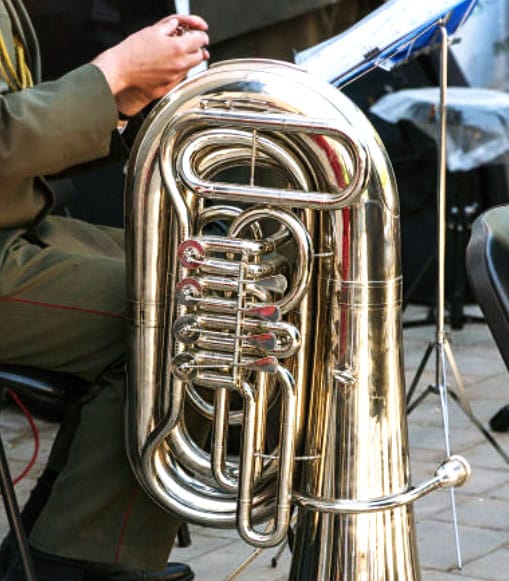
Embarking on the quest to learn the euphonium notes is like jumping into a pool of chocolate pudding—it’s messy, it’s delicious, and oh boy, is it fun! Whether you’re a fresh-faced newbie with dreams of grandeur or a seasoned pro with more scales under your belt than a fish market, mastering this tuba’s svelte cousin is like getting a high-five from the universe.
So, what are you waiting for? Grab that curvaceous brass buddy of yours and let’s plunge headfirst into the bubbly jacuzzi of notes, scales, and melodies.
By the end of this, you’ll be serenading strangers, wooing your plants, and maybe even conducting a symphony of ducks at your local pond. Let’s get those notes a-rollin’!
Understanding Euphonium Notes
The euphonium is a brass instrument with a range of notes spanning from low to high.
The notes are produced by buzzing your lips into a mouthpiece and pressing down on valves to change the length of the tubing, which changes the note’s pitch.
The euphonium is typically written in the bass clef, meaning the notes are written on the staff with the F clef.
It’s the standard notation used for the instrument, unlike the treble clef, which is commonly used for other instruments like the violin.
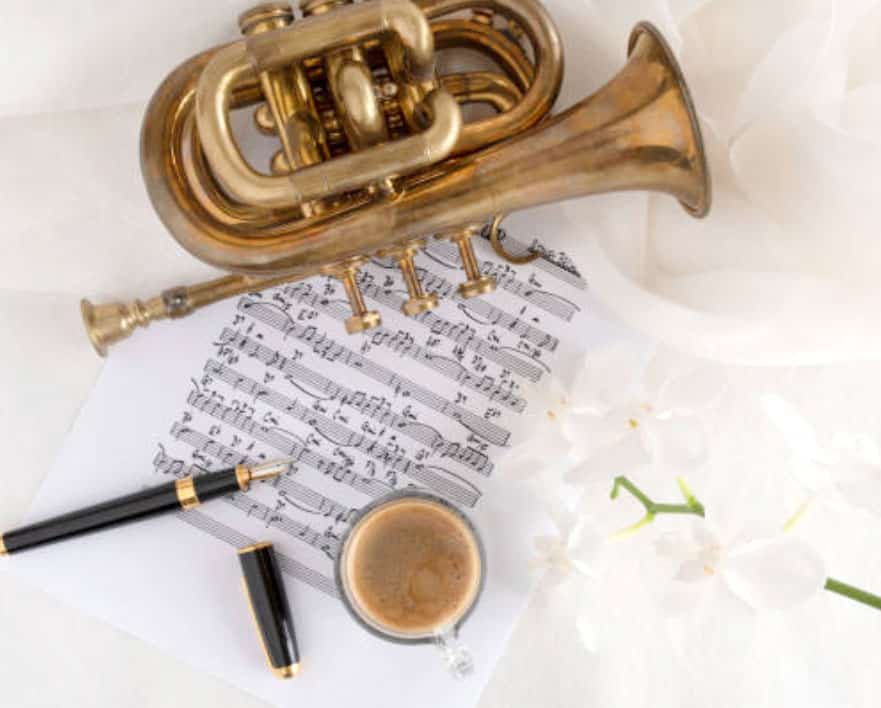
The notes on the euphonium are written like other instruments, with the lower notes on the bottom of the staff and the higher notes on the top.
Reading Euphonium Sheet Music
If you’re new to playing the euphonium, reading sheet music can initially seem daunting. However, with a little practice and patience, you’ll soon be able to read and play music easily.
Note Names
Note Values
Note Positions
Here’s a breakdown of the notes that can be played on each partial:
1st partial: Bb, C, Db, D, Eb, E, F
2nd partial: G, Ab, A, Bb, B, C
3rd partial: Db, D, Eb, E, F, F#, G
4th partial: Ab, A, Bb, B, C, Db
5th partial: B, C, Db, D, Eb
6th partial: F#, G, Ab, A, Bb
7th partial: C, Db, D, Eb
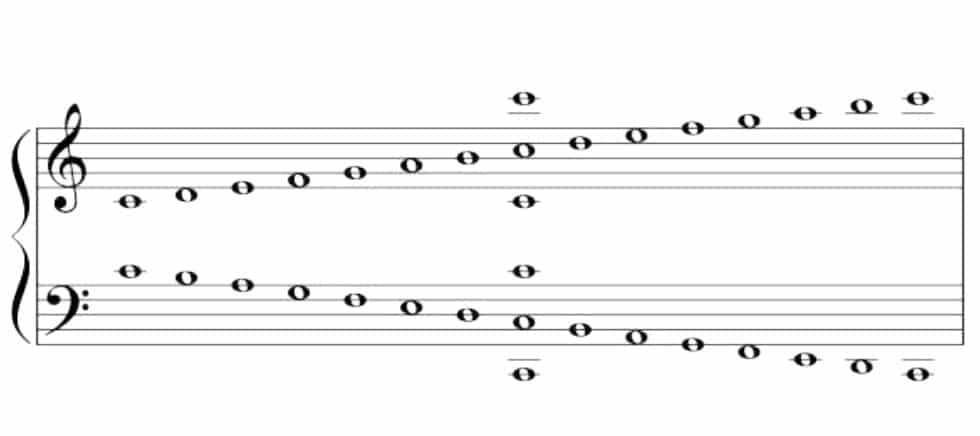
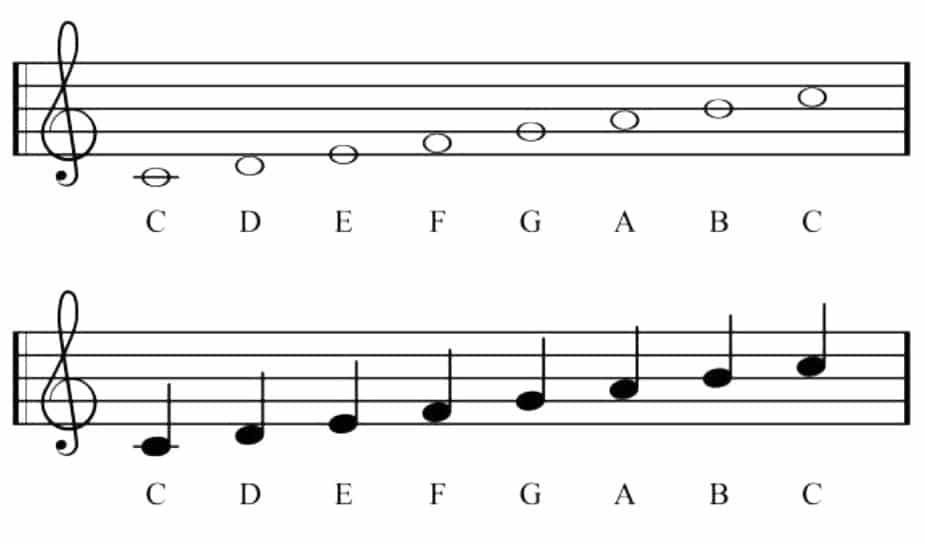
By understanding the fingering charts and the different valve combinations, you can start to play various notes on the euphonium. Practice is key, so keep at it and have fun!
Producing Notes: Compensating vs Non Compensating Euphoniums
For non-compensating euphoniums, the overtone series can present a significant challenge for players.
Unlike compensating euphoniums, which use a series of additional tubing to correct for intonation issues, non-compensating euphoniums rely on the player’s ability to control the overtone series to produce accurate and in-tune notes.
This can be incredibly challenging in the lower register, where the overtone series is more complex and difficult to control.
However, with practice and a deep understanding of the overtone series, non-compensating euphonium players can still achieve excellent intonation and produce beautiful, rich tones that are sure to impress.
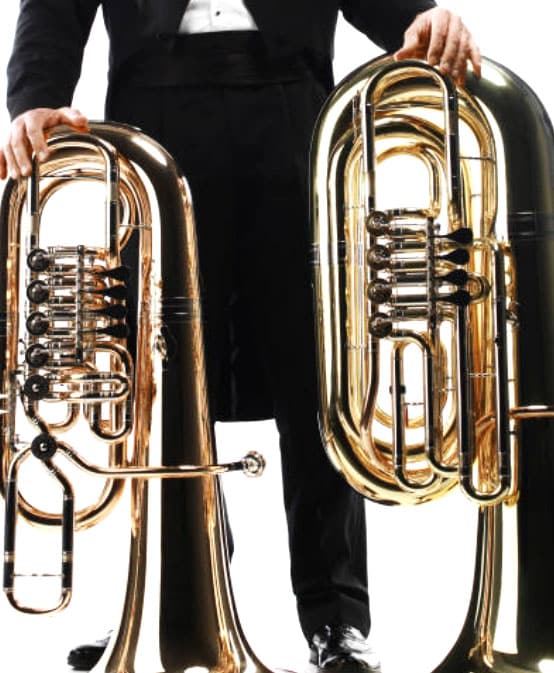
Our Recommended Euphoniums for Beginners
Yamaha YEP201 Student Euphonium, Gold
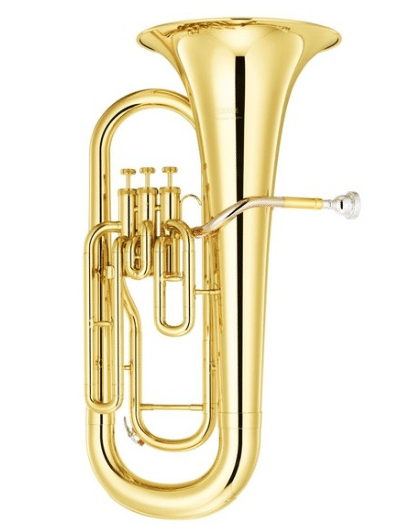
FEATURES:
-With a crisp, warm, tone and balanced blowing resistance throughout the range
- Has a carefully designed valve system providing perfect intonation
- Lighter weight model
- Tonal colours suitable for ensemble and solo performances
- Comes included with a Yamaha mouthpiece and a sturdy case
- Offers a free five-year extended warranty when purchased
- The gold finish on the instrument can be prone to scratches and wear
When you click ‘Check Price’, you’ll see there are loads of great places to buy this item. Our personal favorite is Sweetwater for the US, and Thomann and Gear4Music for the UK & Europe.
They are the largest music retailers, with excellent customer service, competitive prices, really fast shipping, and the longest guarantees.
The professional musician who wrote this article combined many things,
from the product build, manufacturer’s reputation through to feedback
from other users, to create our famous TedScore™.
Jupiter JEP1000 Euphonium, Clear Lacquer
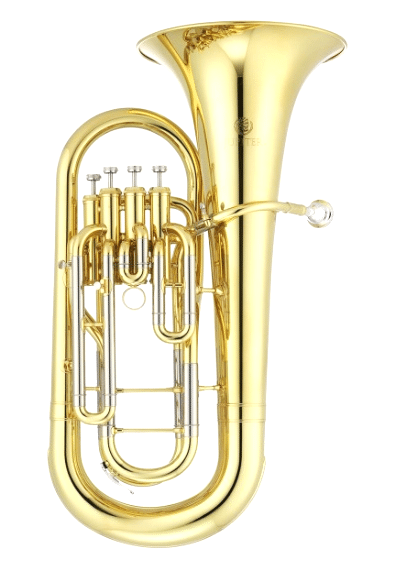
FEATURES:
-Play smoothly with stainless steel pistons
- A maintenance-friendly design thanks to removable valve sections
- Fit in anywhere with a professional-looking lacquered brass body
-You're ready to go with the included wood-frame case
- Includes a wood-frame case
- The instrument's slightly heavy weight can be a challenge for some younger or smaller players
When you click ‘Check Price’, you’ll see there are loads of great places to buy this item. Our personal favorite is Sweetwater for the US, and Thomann and Gear4Music for the UK & Europe.
They are the largest music retailers, with excellent customer service, competitive prices, really fast shipping, and the longest guarantees.
The professional musician who wrote this article combined many things,
from the product build, manufacturer’s reputation through to feedback
from other users, to create our famous TedScore™.
Elkhart 100EH Student 3 Valve Euphonium
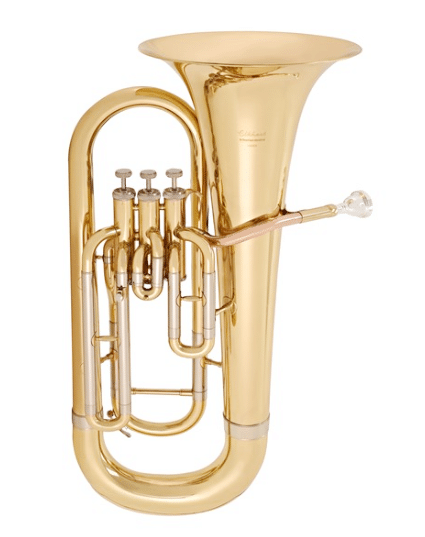
FEATURES:
Rose brass leadpipe produces a fantastic tone
- Designed by the famous Vincent Bach company
-Steel valves are light, smooth, and durable
- Includes backpack-style case and mouthpiece
- Perfectly suited for both schools and brass bands
- Some users reported that the sound quality is not as rich or full as higher-quality models
When you click ‘Check Price’, you’ll see there are loads of great places to buy this item. Our personal favorite is Sweetwater for the US, and Thomann and Gear4Music for the UK & Europe.
They are the largest music retailers, with excellent customer service, competitive prices, really fast shipping, and the longest guarantees.
The professional musician who wrote this article combined many things,
from the product build, manufacturer’s reputation through to feedback
from other users, to create our famous TedScore™.
Euphonium Notes: A Recap
Summary
The euphonium notes are like a musical staircase that takes you to higher and lower pitches.
You can climb up and down this staircase with some practice and patience to create beautiful melodies and harmonies that will make your heart sing.
So keep practising those notes; before you know it, you’ll be a euphonium virtuoso!
Wait, there’s more!!!
You’ll probably find this Euphonium Fingering Chart really useful…
FAQ's
The euphonium is a brass instrument that typically plays in the bass clef. The notes on a euphonium range from Bb1 to Bb5, with the most commonly used notes in the middle range.
The euphonium is a transposing instrument, meaning that the actual pitch of the notes played differs from the written pitch. Most euphoniums are in the key of Bb, which means that when the player reads a C on the sheet music, they will play a Bb on the instrument.
No, the euphonium does not have the same notes as the trumpet. The euphonium has a lower range and a larger bore size, producing a more mellow and rich sound compared to the trumpet’s brighter and more piercing sound.











I have to wonder, with all the digital ways to make music these days, are traditional instruments like the euphonium becoming obsolete? Just food for thought.
never knew there was so much to brass instruments. this article makes me wanna try the euphonium. sounds dope.
Great article, Lewis! It’s awesome to see more resources popping up for euphonium players. The section on compensating vs non-compensating euphoniums really hits home because not a lot of beginners understand the difference, but it’s crucial for intonation. Keep up the good work!
Hey EuphoNewbie, essentially, compensating euphoniums have an extra set of tubing that helps to correct the intonation of the lower notes. Non-compensating ones don’t, so you have to manually adjust more. Hope that helps!
so whats the difference exactly? kinda lost here
Hey, so I’m new to playing the euphonium and reading sheet music feels like trying to decode ancient symbols, lol. Does anyone have tips on how to get better at it? Like, how did you guys start out?